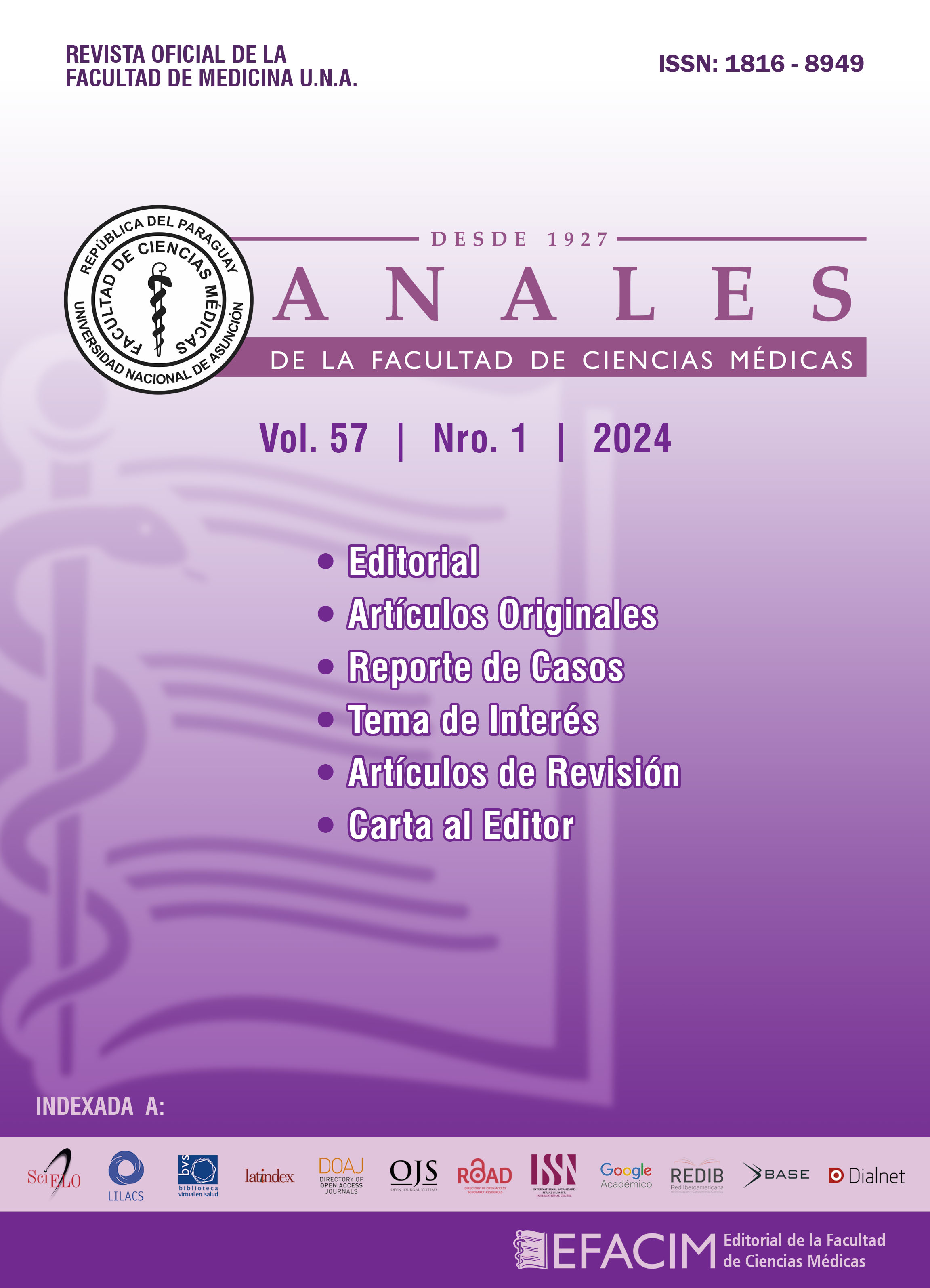Validez de herramientas diagnósticas en pacientes pediátricos hospitalizados con diagnóstico presuntivo de dengue en un Hospital de Referencia de Paraguay
Palabras clave:
fiebre dengue, herramientas diagnósticas, proteína C reactiva, trombocitopenia, pediatríaResumen
Introducción: El dengue es la enfermedad arboviral más común en los seres humanos. Un diagnóstico temprano y preciso del dengue puede respaldar el manejo clínico, la vigilancia y el control de la enfermedad y es fundamental, por ello en el diagnóstico del dengue es importante contar con pautas clínicas y epidemiológicas que permitan la identificación oportuna y una conducta terapéutica adecuada. Objetivos: Evaluar la validez de herramientas diagnósticas en pacientes pediátricos hospitalizados con diagnóstico presuntivo de dengue en un Hospital de Referencia de Paraguay durante los años de 2012 a 2020. Materiales y métodos: Estudio analítico de tipo observacional, retrospectivo correspondientes a pacientes pediátricos (0 a 18 años) internados en el Hospital de Referencia de Paraguay el periodo enero 2012 a julio 2020 con diagnostico presuntivo de dengue al ingreso. Se realizó́ un análisis bivariado relacionando las frecuencias de 20 grupos de criterios diagnósticos combinados y 3 criterios diagnósticos aislados (OMS 2009, nexo epidemiológico y antigenemia NS1 para dengue) con el gold standard de diagnóstico que fue la conversión serológica. Resultados: Participaron del estudio 342 sujetos. EL 44% tenía edad escolar y 70% tenía 5 años o más. El 52,76% (191) fueron masculinos. Se encontraron desnutrición y sobrepeso en el 13% y 2%, respectivamente. La combinación de proteína C reactiva con plaquetopenia se encontró́ en 0.45% de los pacientes sin dengue y en el 6% de los pacientes con diagnóstico final de dengue (p=0.004). Conclusión: Este resultado aporta la alternativa de uso de una combinación sencilla de exámenes de laboratorio que puede replicarse en salas de urgencias como en salas de internación en un primer contacto con pacientes febriles con sospecha de fiebre dengue.





